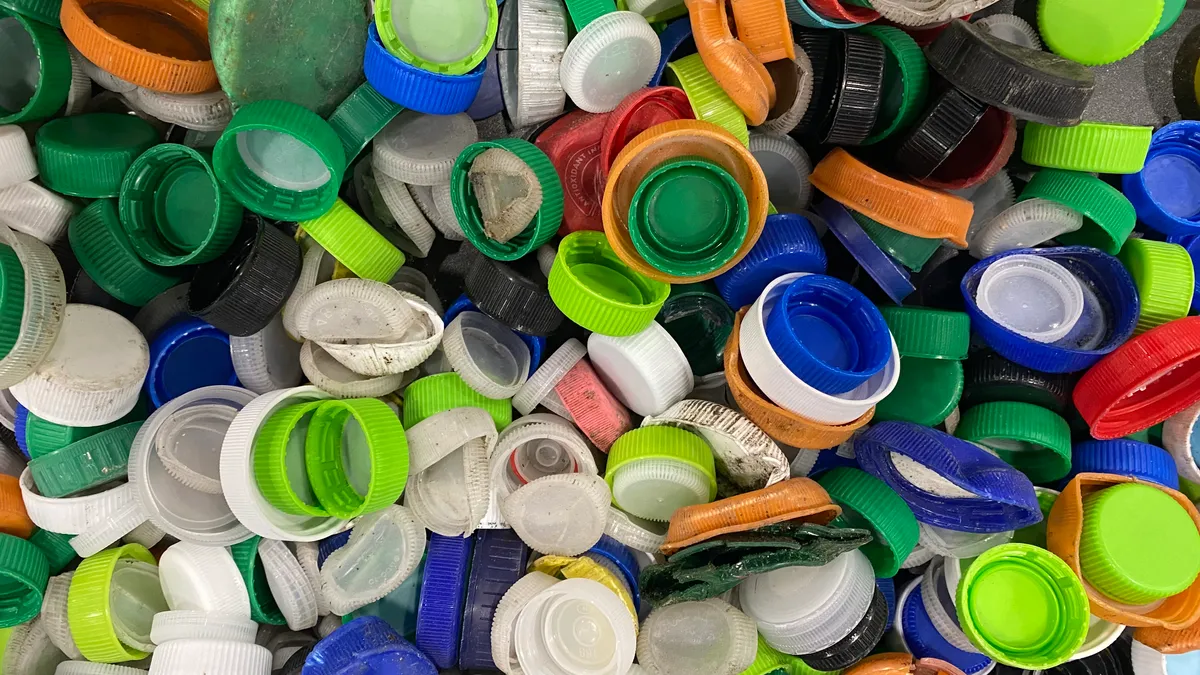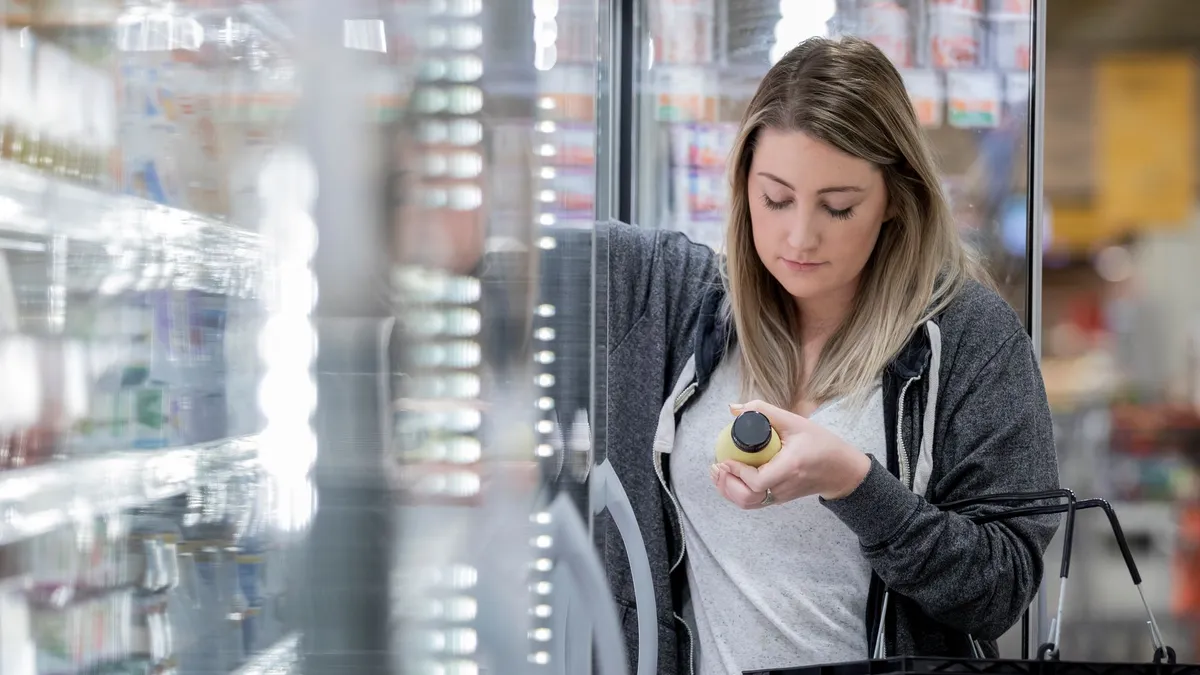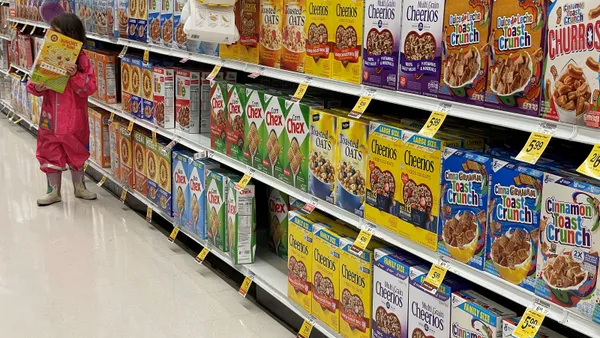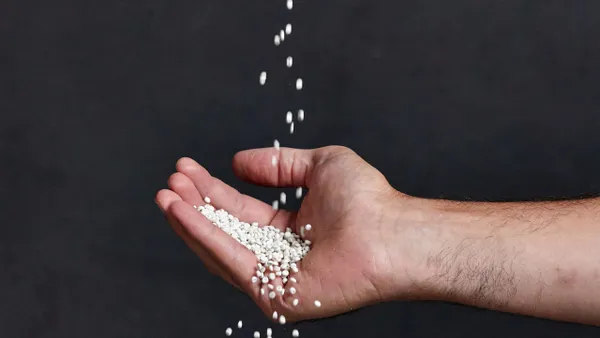Companies that have signed up to be part of the Ellen MacArthur Foundation’s global commitment to a “circular economy for plastic” continued to make incremental progress in 2023. But “the world is off track to eliminate plastic waste and pollution,” and global commitment participants are likely to miss their 2025 targets, according to a newly released annual progress report that covers 2023 data.
Six years into reporting on the commitment, it’s evident that participants — called signatories — likely will not achieve the 2025 plastics targets, the report says, reiterating the group’s past alerts about the potential to fall short. Some companies already have adjusted their own targets in response to their actual progress, such as pushing targets from 2025 to 2030. Achieving 100% reusable, recyclable or compostable packaging has proven particularly challenging.
Businesses that represent about 20% of all plastic packaging produced globally have signed up to participate in annual reporting, whereas the other 80% are not covered. The report includes data from 124 signatories that produce, use and recycle large volumes of plastic packaging, in addition to 16 governments across four continents. It notes that three signatories left the global commitment over the last year due to unwillingness to fulfill mandatory participation requirements: Tupperware, packaging company Sidel and retailer El Corte Inglés.
The report highlights the importance of celebrating victories while also being transparent about areas for improvement.
The reduction of virgin plastic use by 3% since 2018, compared with 2022’s 0.1%, marks a larger year-over-year drop than in past years. The target is for an 18% decrease by next year. In contrast to signatories’ decrease, the report says the entire plastic packaging market increased its virgin plastic use by 8% since 2018. Signatories have avoided the use of 9.6 million metric tons of virgin plastic since 2018, according to the report.
About a third of global commitment signatories are on track to achieve their virgin plastic reduction targets, but accelerating reduction for the whole group will require more postconsumer recycled content and a reduction in total packaging use, the report says. Although total plastic packaging use decreased in 2023, it’s up 7% since 2018.
Brand and retail signatories nearly tripled the share of PCR in their plastic packaging since 2018. PCR now accounts for 14% of brand and retail signatories’ plastic packaging, up two percentage points year over year and higher than the 5% baseline set in 2018. The 2025 target is 26% of plastic packaging compared with 2018 levels. The increase in 2023 is due to business commitments, investments in recycling infrastructure and certain legislative changes, according to the report.
Major differences in PCR use are evident across business sectors, the report explains. Cosmetics leads the pack with an average of 31% PCR use in 2023, while the food sector is at 10%.
Compared to the 2018 baseline, the amount of reusable, recyclable or compostable packaging has increased 7 percentage points toward the goal of a 37 percentage point increase, or 100% of packaging, by 2025. That’s a nearly four percentage point increase over 2022. Achieving the remaining progress “will require significant improvements in infrastructure and/or major packaging portfolio shifts.” Some pain points are small-format packaging like sachets and wrappers.
The growth primarily was driven by recyclability, with a large role played by polypropylene and other rigid packaging being reclassified as recyclable in practice and at scale. The report says opportunity areas for further packaging recyclability improvements include removing carbon black pigment and removing or redesigning components including caps, lids, pumps and trigger sprayers.
Progress on moving away from single-use and toward reusable plastic packaging is flat and represents an area that “remains niche,” the report says. Reusables constituted 1.3% of signatories’ share of total packaging, up only slightly from 1.2% in 2022. While 64% of signatories have launched reuse pilot programs since 2020, these have not resulted in scaled reuse models. Plus, the current reuse metric, total weight of reusable packaging, “does not show the full picture” and a more comprehensive metric therefore is being developed, the report says.
In addition to companies continuing their work, strong policy measures are needed to tackle hurdles in the key areas of reuse, flexible packaging and infrastructure, according to the report.















